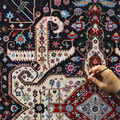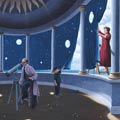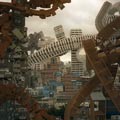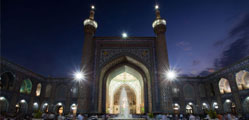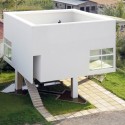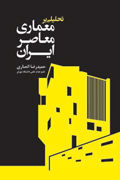اپرای پاریس
اثر چارلز گارنیه! معمار معروف سبک نیوباروک فرانسه!
1878
شاید از آخرین آثاری به حساب بیاد که به زور هم شده داشته سعی می کرده امتداد سیر معماری و هنر اروپا باشه!

©Wikimedia Commons
The Paris Opera, or Palais Garnier, is the most famous auditorium in the world. With 2,200 seats, this opera house designed by
Charles Garnier is admired as one of the most prominent architectural masterpieces of its time.
More on the Paris Opera by
Charles Garnier after the break.

©Wikimedia Commons
The Paris Opera was designed as part of the great Parisian reconstruction, which was initiated by Emperor Napolean III of the Second Empire. The emperor chose Baron Haussmann to supervise the reconstruction, first ordering that he clear 12,000 square metres of land on which the theatre was to be built. This would be the second theatre for the world renowned Parisian Opera and Ballet companies. An open competition was announced in 1861, which was won by
Charles Garnier who was an unknown 32-year-old architect at the time.

©Wikimedia Commons
Although the design of the building seemed to be just what Emperor Napolean III had in mind, the setbacks and natural disasters were not what the builders needed. Once construction had begun in 1862, it didn't take long before the workers realized a critical error in the location on which the opera would be built; the ground of the lot was extremely swampy, under which flowed a subterranean lake. This delayed the pouring of the concrete foundation, as the water had to be continuously pumped out, lasting eight months. More setbacks troubled the builders, including the Franco-Prussian War, the subsequent fall of the Second French Empire, and the Paris Commune.

©Wikimedia Commons
A fire raged for 27 hours straight in late October 1873, burning down the current theater known as the Salle Le Peletier. This added extra pressure to complete the new theatre, and the massive workforce was able to finish building the Palais Garnier by late 1874. It's inauguration followed soon after, in January of 1875, opening with a lavish gala. As the home of the original Phantom of the Opera, it is said that the opera is haunted as a person was killed in 1896 by a falling counterweight of the grand chandelier. This incident inspired Gaston Leroux in the original writing of the play, as did the underground lake and cellars.

©Wikimedia Commons
Palais Garnier is of the Neo-Baroque style, a term used to describe architecture that encompasses the key characteristics of Baroque style although built after the proper time period. The monumental style can also be classified as Beaux-Arts, with its use of axial symmetry in plan, and its exterior ornamentation. One of the major urban implications of the Paris Opera is it's location at the northern end of Avenue de l'Opera in France. It's role as the terminal axial point suggests that as a public space, it should hold much importance in the community.

©Wikimedia Commons
The audience sits centered around a hanging chandelier, weighing over six tons, and the large stage was built to accommodate up to 450 artists. It is opulently decorated with marble friezes, columns, and statuary, many of which are used to portray deities from Greek mythology. The Paris Opera was meant to be a social gathering space for the people, which is reflected in the interweaving corridors, stairwells, landings and alcoves which allow movement of large masses of people while also permitting socializing during intermission.
Palais Garnier became an influential architectural prototype for many theaters built around the world.

©Wikimedia Commons
Architect:
Charles Garnier
Location: Paris, France
Project Year: 1878
Photographs: Wikimedia Commons
References:
Gerard Fontaine,
Anna Irina Kukrika,
Christopher Curtis Mead


























































